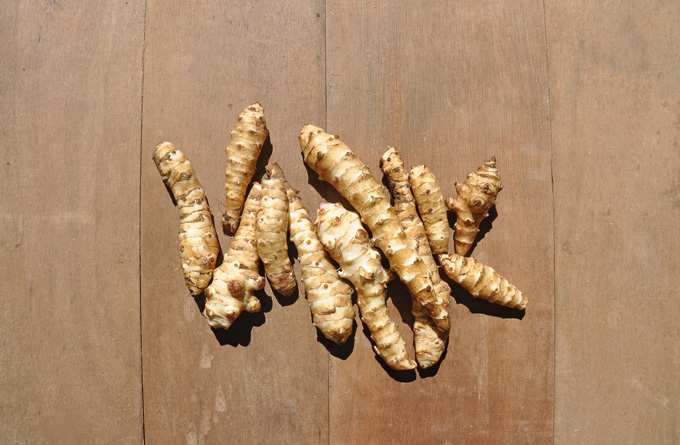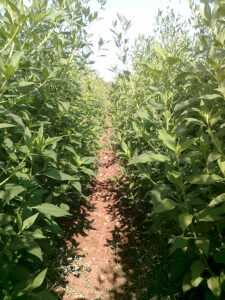Dates: All going well, Samar dates will be making the long journey from the southern Arava to the Ayalon Valley this week. We await the long-heralded arrival of the distinctive, delicious Barhi and Dekel Nur varieties. As soon as they land at Chubeza, we will add them to the order system at the price of 20 NIS per kg.
______________
It’s the end of the month again…
At the end of this week we will bill your cards for the November vegetables, fruits and other products ordered through Chubeza.
We would like to remind you that you are now able to view your billing history in our Internet-based order system. It’s easy now, simply click the new tab “דו”ח הזמנות ותשלומים” where the history of your payments and purchases is clearly displayed.
Keep in mind that it takes two to three days to update your payments, but if you receive an invoice/receipt to your email, you know the billing was successful.
____________________________
Aliza, a veteran client, told me about this wonderful website of second hand items in Israel, including clothes, books, music, furniture and everything, really. Enjoy!
______________________________________
An American in Jerusalem (and in the Ayalon Valley)
After much ado, a sneak preview, and many promises, it has finally made its way officially to the Chubeza boxes: Welcome, please, the Jerusalem artichoke!
It’s not really an artichoke, and certainly is not a “Yerushalmi,” but it is a wonderfully delicious treat that’s very easy to prepare. This week we proudly dedicate our newsletter and recipes to the New Vegetable in the Box, as captured in this great photo from Gal’s blog, Ptitim:
The Jerusalem artichoke is actually a type of sunflower which develops an edible bulb. The origins of this delectable bulb are in North American east coast from Georgia to Nova Scotia, where it has been both growing wild and cultivated in Native American vegetable gardens for years on end. Here the Jerusalem artichoke fully enjoys the American sunshine and rich, fertile earth, yielding farmers and gleaners its rich roots that bound with energy and sweetness.
The Europeans who came to visit and stayed to conquer tasted it and fell in love. The first to describe the bulb was French explorer Samuel de Champlain, who noticed it in a Cape Cod vegetable garden in 1602. He sent some to France, from which it meandered to England, Germany and Italy. The Italians termed it girasole, Italian for “sunflower.” Somehow the pronunciation was distorted to “Jerusalem,” and it stuck. The “artichoke” part came from the fact that it somewhat resembles the artichoke in taste. In America, it’s commonly known as a “sunchoke.”
Like any sunflower, it adores the sun and grows during the summer. For Chubeza, this is the first summer we’ve watched its growth. I say “watch,” because from the moment we placed the bulbs in the earth until we plunged the pitchfork in to remove them, we really did not have much to do (aside from occasional weeding and watering). We were rather amazed at the beautiful strength of its growth, at its ability to joyfully grow wild and dare the weeds to even think of coming close. In our field, the Jerusalem artichoke is free from pests (moles and rats are their nemesis), which is why we could just step aside and simply watch it grow. Patiently.
Here it is going wild, blooming, growing: The Jerusalem artichoke in Chubeza:
And yes, we required much patience. The plant took its sweet time for at least seven months, growing, wilting and clandestinely swelling up its unique roots. By the end of October when the foliage had dried up, we inserted the pitchfork to examine the situation, only to discover that we needed more patience. So we waited a bit longer, regularly sampling some to gobble up for lunch. Now, a month later, we are finally beginning to pull out all these yummy, distinctive bulbs.
Though it grows underground like the potato (even if it is more stubborn and recalcitrant than a later) and has a similar caloric value, the Jerusalem artichoke is low in carbs. Instead of starch, it contains inulin, a fruit sucrose carbohydrate, soluble in water (which is how it stores its energy in the root bulb). Inulin aids in lowering blood sugar levels, making it recommended for diabetics (contrary to potatoes!). Inulin feeds the friendly microbes in the intestines and reduces the threat of a variety of diseases. On the other hand, it may cause gas, so if you’re first beginning to eat Jerusalem artichokes, start slowly to get the body accustomed. These bulbs are an excellent source of thiamine, iron, niacin, Vitamin B3 and potassium. Chinese medicine classifies the Jerusalem artichoke as a warming vegetable which strengthens the digestive system. A great winter vegetable!
If you wish, you may peel it. If peel it or if you don’t like peeling the knobby bulbs, here are some tips from Phylis Glazer:
The Jerusalem artichoke turns black quickly after being peeled, so it is recommended to place it in a bowl filled with water and two tablespoons of lemon juice, or simply drop into milk and cook away. Soaking in water causes the vegetable to lose the B vitamins, which are soluble. Thus it’s best to peel them and give the artichokes a quick soak, or soak from time to time in a water and lemon juice solution while peeling. You can also scrub them well and cook them unpeeled (a young Jerusalem artichoke can be eaten with peeling) and then use the soaking water for soup or other type of dish. If the bumps make it hard to peel, steam the roots for several minutes to remove the peeling with ease.
The most well-known recipe is a Jerusalem artichoke soup, but there are many other ways to enjoy it, from a raw salad to simply oven-roasting. In this week’s recipe corner, I have a host of recipes for our new vegetable. Many thanks to our contributors.
Wishing you peaceful, cozy wintery days, and hoping the sunbeams stored by the Jerusalem artichoke will warm you up and bring happiness.
Mazal Tov to Aliza, our in-house translator and my personal savior in times of trouble: Happy Birthday!
Alon, Ya’ara, Bat Ami and the Chubeza team
__________________________________
WHAT’S IN THIS WEEK’S BOXES?
Monday: Lettuce, spinach, carrots, tomatoes, beets, Dutch cucumbers, cauliflower, kohlrabi or turnips, scallions or chives, coriander (small boxes only), Jerusalem artichoke (small boxes only)
In the large box, in addition: pumpkin, broccoli or cabbage, kale, leeks, parsley
Wednesday: broccoli or cabbage, arugula, lettuce, turnips, aculiflower, parsley or cilantro, cucumbers, carrots, Swiss chard or Red Russian kale, tomatoes, Jerusalem artichokes (small box only)
In the large box, in addition: radishes, eggplants or pumpkin, green onions, beets
__________________________________________
JERUSALEM ARTICHOKE RECIPE CORNER:
Tal sent me this vegan recipe of Chef Yossi Shitrit from the “Kitchen Market” Restaurant:
JERUSALEM ARTICHOKE SOUP
3 cups Jerusalem artichokes (around 1 – 1 ½ kilo), peeled and sliced into cubes
½ cup sliced leeks (only the white part of one medium-sized leek)
4 whole garlic cloves
1 spring of lemon thyme (or regular)
Water
2 T chopped lemongrass (or grated rind of half a lemon)
1 container of coconut milk
2 T. chopped ginger
3 T olive oil
1 T coconut oil
Salt and freshly-ground black pepper
Preparation:
- In a wide pot, melt the coconut oil. Add the leeks and steam lightly while stirring 2-3 minutes, till leeks are transparent.
- Add the garlic cloves, the lemongrass and ginger. Sauté for around two minutes. Add the Jerusalem artichoke and enough water to cover.
- Bring to a boil. Lower heat to a light boil and cook for around 30 minutes, or till artichokes are completely soft.
- Add the coconut milk and season with salt and pepper. Blend soup well together with liquid in food processor or hand-blender till smooth. If desired, press soup through fine-meshed sieve till completely smooth. Return to pot until served.




